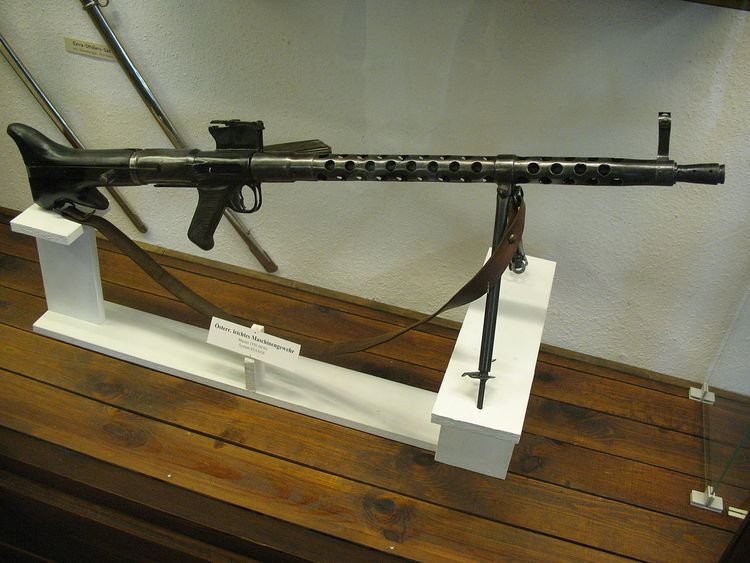Type Machine gun In service 1930s–1940s | Used by See Users Designer Louis Stange | |
 | ||
The Maschinengewehr 30, or MG 30 was a German-designed machine gun that saw some service with various armed forces in the 1930s. It was also modified to become the standard German aircraft gun as the MG 15 and MG 17. It is most notable as the design pattern that led to the MG 34 and MG 42, and thus is one of the major ancestors of many of the weapons in service which would later find widespread use into the 21st century.
Contents
History
Development of the MG 30 took place under the direction of Louis Stange at Rheinmetall's Sömmerda office. However actual production of machine guns was prohibited in Germany under the Versailles Treaty, and the design was rejected by the Reichswehr. Rheinmetall then turned to other companies and licensed the design to Solothurn in Switzerland and Steyr-Daimler-Puch in Austria. Production soon followed, entering the armed forces of both countries as the Solothurn S2-200 and Maschinengewehr Solothurn 1930, or MG 30, respectively. 2000–3000 were also purchased by Hungary, where it was known as the Solothurn 31.M Golyószóró.
Design
The gun is an air-cooled, recoil-operated design, firing standard 7.92×57mm Mauser ammunition, fed from a slightly curved 30-round magazine inserted in the left side of the weapon. It uses a locking ring, which is located at the end of the barrel extension, to lock the bolt. Inside the locking ring, there are six sets of locking lugs, arranged as an interrupted thread, which mate with lugs cut at the rear of the bolt. Rotation of the ring, which locks and unlocks the bolt, is controlled by rollers mounted on the outside of the ring. Upon recoil, these rollers follow cam tracks cut into the receiver. The gun is of relatively simple design, with most parts having a round cross-section. The tubular receiver is an extension of the barrel jacket. The butt hosts a tube which contains the return spring and its guide.
The MG 30 fired both in semi-automatic and full automatic mode depending on how far the two-stage trigger is pulled, with a rate of fire between 600 and 800 rounds per minute in full-auto. It included a folding bipod attached two-thirds down the barrel.
Variants
Rheinmetall's Borsig office modified the MG 30 design for use as an aircraft gun, producing the Flugzeugmaschinengewehr 15, or MG 15. The primary changes were the use of a double-drum magazine holding 75 rounds, and the removal of the stock for use inside the cramped quarters of a bomber.
Further modification in 1936 led to the MG 17, which included provisions for belt-fed ammo in addition to the drums, increased the rate of fire to about 1,200 rpm, and with its design incorporating a closed bolt firing cycle, was suitable for use on a synchronization gear system-equipped aircraft for shooting through the aircraft's own propeller.
7.92×57mm weapons were no longer considered useful by the Luftwaffe once enough MG 131s were available. The partial armour protection of most new military aircraft had caught up with the 792×57mm SmK cartridge by 1940. Many MG 15, MG 17 and more modern 7.92 mm MG 81 were then used by forces on the ground, especially since 1944. Many were modified with a bipod and simple metal stock, and other belt-fed MG 17 and MG 81 were built into dedicated anti-air machine gun twin and quad mounts.
47 of these machineguns were made in 7×57mm Mauser for El Salvador.
